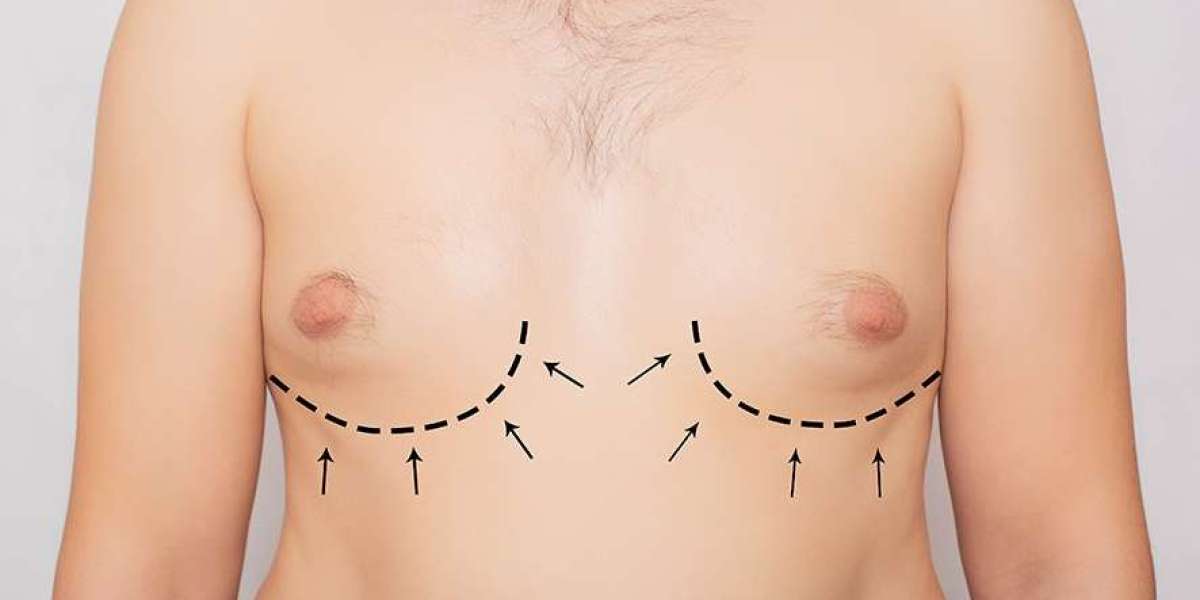Gynaecomastia, often referred to as "man boobs," is a condition where male breast tissue becomes enlarged due to a hormonal imbalance, lifestyle factors, or underlying health issues. Although it is usually benign and not physically dangerous, it can significantly impact a man's self-esteem and mental health. While some men may try to ignore the condition, others seek medical or surgical intervention. When it comes to resolving this issue effectively, Gynaecomastia Treatment can provide a clear path to restoring both physical appearance and emotional well-being.
Understanding the Causes of Gynaecomastia
The development of enlarged male breast tissue is typically the result of an imbalance between the hormones estrogen and testosterone. Although estrogen is commonly thought of as a female hormone, men also produce it in small amounts. When estrogen levels rise or testosterone levels drop, this imbalance can lead to the growth of breast tissue.
There are several potential triggers for this hormonal disruption. Adolescents may experience temporary gynaecomastia due to natural hormonal changes during puberty, which often resolves on its own. In adults, the condition can be associated with aging, particularly as testosterone levels naturally decline.
Medications are another common cause. Drugs used to treat conditions such as ulcers, heart disease, and prostate cancer have been known to interfere with hormone levels. Additionally, recreational drug use, including anabolic steroids, marijuana, and alcohol abuse, can lead to gynaecomastia. Underlying health conditions such as liver disease, kidney failure, and tumors can also contribute to the development of the condition.
Available Treatment Options
The right treatment for gynaecomastia depends on the underlying cause, the severity of the condition, and the individual’s health goals. In many cases, especially during puberty, no treatment is necessary as the condition may resolve naturally. However, when gynaecomastia persists or causes psychological distress, various treatment options are available.
Lifestyle Modifications: For some men, weight loss and regular exercise may help reduce the appearance of enlarged breasts, especially if the condition is linked to excess body fat. However, if the tissue is glandular rather than fatty, these measures may not be sufficient.
Medication: When the condition is hormone-related, certain medications can help rebalance hormone levels. Drugs such as tamoxifen or raloxifene, which are typically used in breast cancer treatment, may be prescribed to reduce breast size in men. These medications are not FDA-approved for gynaecomastia but are sometimes used off-label.
Surgery: For those who do not respond to lifestyle changes or medication, surgery may be the most effective solution. The two primary surgical options are liposuction and mastectomy. Liposuction removes excess fat but leaves the glandular tissue intact. Mastectomy, on the other hand, removes the glandular breast tissue and is often performed using minimally invasive techniques, resulting in minimal scarring and a relatively short recovery time.
The Surgical Journey: What to Expect Before
Deciding to undergo surgery for gynaecomastia is a significant step. Before the procedure, the patient typically undergoes a thorough evaluation, which may include blood tests, imaging studies, and a review of medical history to determine the underlying cause. Surgeons will also assess the grade of gynaecomastia to determine the appropriate surgical approach.
Patients are advised to stop smoking, avoid certain medications, and maintain a healthy lifestyle leading up to the surgery. Detailed pre-operative instructions are provided to ensure a smooth experience and minimize the risk of complications.
One of the key aspects of preparing for surgery is managing expectations. Surgeons will discuss the anticipated outcomes, potential risks, and recovery timeline. This helps ensure that patients are mentally and physically prepared for the journey ahead.
What Happens After the Procedure
Post-surgical recovery varies from person to person but typically involves mild discomfort, swelling, and bruising for the first few days. Compression garments are often recommended to help reduce swelling and support the chest as it heals. Most patients can return to light activities within a few days, although strenuous activities and exercise should be avoided for a few weeks.
Scarring is minimal in most modern procedures, especially when performed by a skilled surgeon. Over time, scars fade and become less noticeable. Follow-up appointments are crucial to monitor healing and address any concerns that may arise during recovery.
Emotionally, many men report a significant improvement in self-confidence and body image following the surgery. Wearing fitted shirts, going to the beach, or participating in physical activities becomes less stressful. This emotional uplift can be just as valuable as the physical changes brought about by the surgery.
Long-Term Results and Considerations
In most cases, gynaecomastia surgery offers long-lasting results. However, maintaining a stable weight and healthy lifestyle is essential to prevent recurrence. If the initial cause of gynaecomastia was due to drug use, hormone imbalance, or a medical condition, addressing that underlying issue is crucial to prevent future problems.
Some men may benefit from counseling or psychological support during and after the treatment process, especially if they’ve struggled with body image issues for an extended period. A holistic approach that includes medical, surgical, and emotional care often yields the best outcomes.
Cost is another factor to consider. Because gynaecomastia is often considered a cosmetic issue, many insurance providers may not cover treatment unless it is linked to a medical condition. It's important to discuss financing and coverage options with your healthcare provider.
Final Thoughts
Living with gynaecomastia can be emotionally challenging, but effective treatment options are available. From lifestyle changes and medications to advanced surgical procedures, men now have several paths to reclaim their body confidence. The most important step is to seek a professional evaluation to understand the cause of the condition and choose the most suitable treatment. Whether temporary or permanent, mild or severe, gynaecomastia doesn’t have to define your self-image or limit your life.






